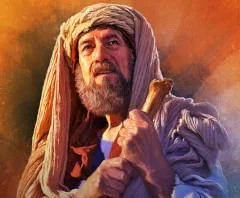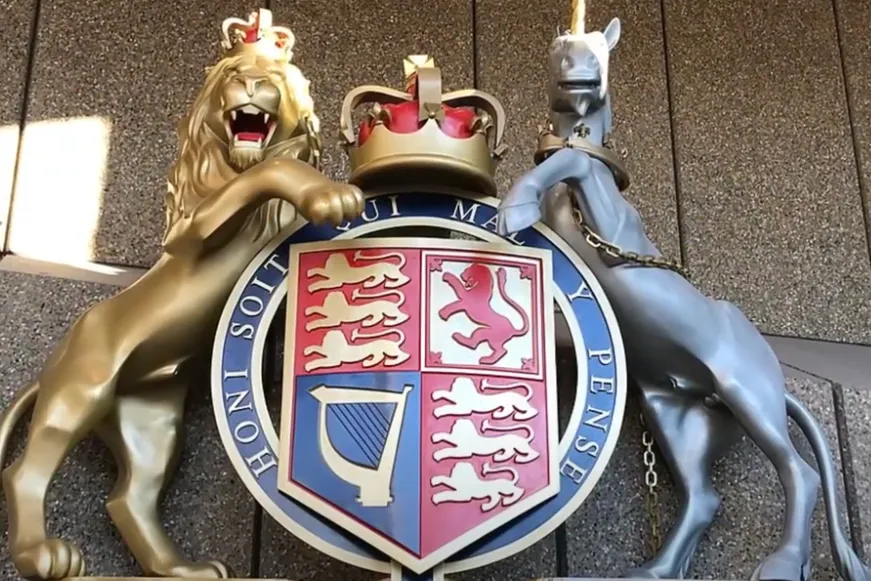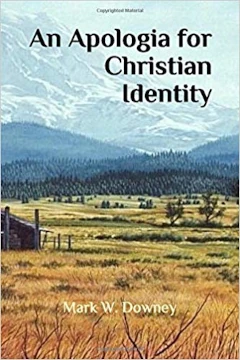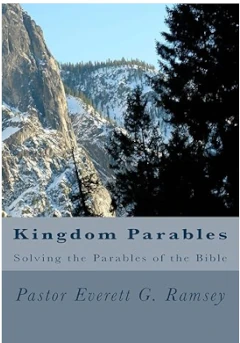Israelite Migrations - Part 4
ANGLO-SAXON ISRAEL
By Jim Jester
December 1, 2019
Scripture Reading: Isaiah 49:8-21
“Thus saith Yahweh, In an acceptable time have I heard thee, and in a day of salvation have I helped thee: and I will preserve thee, and give thee for a covenant of the people, to establish the earth, to cause to inherit the desolate heritages; That thou mayest say to the prisoners, Go forth; to them that are in darkness, Shew yourselves. They shall feed in the ways, and their pastures shall be in all high places. They shall not hunger nor thirst; neither shall the heat nor sun smite them: for he that hath mercy on them shall lead them, even by the springs of water shall he guide them. And I will make all my mountains a way, and my highways shall be exalted. Behold, these shall come from far: and, lo, these from the north and from the west; and these from the land of Sinim. Sing, O heavens; and be joyful, O earth; and break forth into singing, O mountains: for Yahweh hath comforted his people, and will have mercy upon his afflicted. But Zion said, The Yahweh hath forsaken me, and my Lord hath forgotten me. Can a woman forget her sucking child, that she should not have compassion on the son of her womb? yea, they may forget, yet will I not forget thee. Behold, I have graven thee upon the palms of my hands; thy walls are continually before me. Thy children shall make haste; thy destroyers and they that made thee waste shall go forth of thee. Lift up thine eyes round about, and behold: all these gather themselves together, and come to thee. As I live, saith Yahweh, thou shalt surely clothe thee with them all, as with an ornament, and bind them on thee, as a bride doeth. For thy waste and thy desolate places, and the land of thy destruction, shall even now be too narrow by reason of the inhabitants, and they that swallowed thee up shall be far away. The children which thou shalt have, after thou hast lost the other, shall say again in thine ears, The place is too strait for me: give place to me that I may dwell. Then shalt thou say in thine heart, Who hath begotten me these, seeing I have lost my children, and am desolate, a captive, and removing to and fro? and who hath brought up these? Behold, I was left alone; these, where had they been?”
Introduction
In the Scripture reading, Israel is in foreign and desolate lands, yet Yahweh is leading her and using mountain valleys as highways as they continue to migrate to the west and into Europe. “They shall feed in the ways, and their pastures shall be in all high places. They shall not hunger nor thirst; neither shall the heat nor sun smite them: for he that hath mercy on them shall lead them, even by the springs of water shall he guide them” (v. 9-10). God said He would not forget Israel – He provided for them a large enough place to live. “Give ear to the word of the Lord, O you nations, and give news of it in the sea-lands far away, and say, He who has sent Israel wandering will get him together and will keep him as a keeper does his flock” (Jer. 31:10, BBE).
Looking back, we have covered the early migrations of Israelites, then migrations after the divided kingdom: first Israel, then the final blow to Judah – the destruction and captivity of Jerusalem. This is the last lesson of the series tracing further significant migrations of Israel (now not known by that name) throughout Europe and Asia Minor (500-64 B.C.).
[The following section is a condensed version from chapter 10 of Book Two, Identifying Biblical Israel Today, by Lawrence Blanchard.]
 The Names Come Together (515 B.C.)
The Names Come Together (515 B.C.)
After the Medes and Persians defeated Babylon, King Darius continued to expand his empire. His dominion over an immense area included many Israelites. In 515 B.C., he ordered a huge inscription to be chiseled on what is now known as the Behistun Rock:
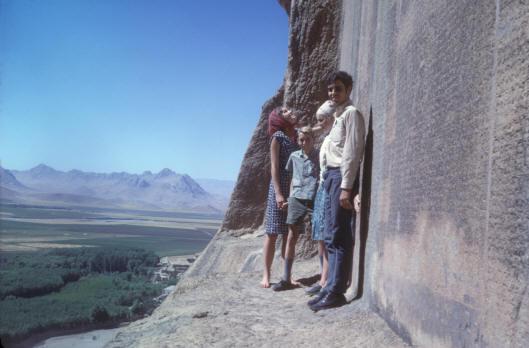 “The inscriptions include a list of 23 nations over whom Darius ruled and named among these are the ‘Sakkas.’ In both the Persian and Elamite versions the original word is Sakka, but in the Babylonian version the same people are called ‘Gimiri.’” – Capt, Missing Links Discovered in Assyrian Tablets, p. 140
“The inscriptions include a list of 23 nations over whom Darius ruled and named among these are the ‘Sakkas.’ In both the Persian and Elamite versions the original word is Sakka, but in the Babylonian version the same people are called ‘Gimiri.’” – Capt, Missing Links Discovered in Assyrian Tablets, p. 140
For a long time, historians did not know these names referred to Israelites. But the connection occurred when archaeologists discovered the Behistun Rock. The dominion of Darius over the Sakkas was recorded in three languages and revealed this connection regarding the captive Israelites and what they were called in each language:
- Babylonian – “Gimiri”
- Persian – “Sakka”
- Elamite – “Sakka”
The importance of this archaeological evidence is the linking of two of the names used for the Israelites. This rock ties the Gimiri and Sakka in these three languages as the same people who were the captives from the house of Israel. Once these two names were linked, other names for Israel also fell into place.
It is important to recognize that the term “Saxon” originated from “Sacae,” a name for the Scythians.
“The Saxons were descended from the ancient Sacae in Asia, and in the process of time they came to be called Saxons.” – Albinus, quoted by R. A. Balaicius, Your Inheritance: The Best Kept Secret in the World, Part 1, p. 24
The name Sacae (also spelled Sakka), was the Persian name for the Scythian Israelites. However, it was originally derived from Isaac. God had told Abraham that his descendants would be called by Isaac’s name:
“But God said, Let it not be a grief to you because of the boy and Hagar his mother; give ear to whatever Sarah says to you, because it is from Isaac that your seed will take its name.” – Gen. 21:12, BBE
Is it just a coincidence that there is a close relationship in the pronunciation of Sacae, Sakka, Saxon, and Isaac? The scattered Israelites have been called by all these names (and more) depending on what language was being used and who was recording the history.
Why the Behistun Rock is Important
The Behistun Rock is an important monument in Iran created by Darius the Great (Darius Hystaspes) in 515 B.C. to proclaim his great accomplishments. It is significant because it reveals the names used to identify the Lost Tribes of Israel. The inscription is in three languages – Persian, Babylonian, and Elamite (Median or Susian) – the names of twenty-three provinces subject to him. In the Persian and Susian versions one of these provinces is called Scythia, the root of which is, phonetically, Sak. In the Babylonian text, this province is called “(matu) Gi-mi-ri”, translated “land of the Cimmerians.” The Behistun Rock inscription establishes the fact that the Sacae lived in the land of the Cimmerians (modern north-west Persia) and that they formed part of the collection of peoples known to the ancients as Scythians.
Listed are the nations and peoples he conquered and ruled as the king of the Medo-Persian Empire. Sir Henry C. Rawlinson is mainly responsible for the decipherment of the inscriptions. It is interesting that Rawlinson accomplished the feat of scaling the rock face while copying the inscriptions, and in 1840 deciphering the texts, all by the age of thirty! The text contains many references that link Darius’ subjects with the Israelites. The name “Kana”, which is Canaan, appears 28 times. We also have a man named “Sarocus the Sacan” who wears a Hebrew hat. Included in the nations listed is the Sakka. The term Sakka in Persian and Elamite becomes Gimri in Babylonian. In the sculpture, we see King Darius facing nine captives, which are secured by the neck with a rope. A tenth is under the King’s foot. Each of these men is differently dressed. Across the bottom and up one side are many panels containing the story of Darius’ conquests. There is also a large section of supplementary text.
The Behistun Rock inscriptions are confirmed in two other places: Darius’ tomb, and a gold tablet. The gold tablet again mentions the conquering of the Sakka, while the tomb inscription expands the evidence by talking about three different kinds of Sakka. In all cases, the same name in Babylonian was Gimri. The Sakka comes from Isaac and becomes Saxon. Gimri comes from Khumri (out of the Biblical name Omri) and goes through Gimmira and the Greek Kimmerioi to Cimmerian. Almost all those names we learned in European history are traceable to the Sakka, Gimri and Scythians. George Rawlinson, Sir Henry Rawlinson’s younger brother, connected the Saka/Gimiri of the Behistun Inscription with deported Israelites:
“We have reasonable grounds for regarding the Gimirri, or Cimmerians, who first appeared on the confines of Assyria and Media in the seventh century B.C., and the Sacae of the Behistun Rock, nearly two centuries later, as identical with the Beth-Khumree of Samaria, or the Ten Tribes of the House of Israel.” – George Rawlinson, note in his translation of History of Herodotus, Book VII, p. 378.
The inscription connects the people known in Old Persian and Elamite as Saka, Sacae or Scythian with the people known in Babylonian as Gimirri or Cimmerian. This is important because the Assyrians referred to the Northern Kingdom of Israel in their records as the “House of Khumri”, named after Israel’s King Omri of the 8th century BCE. Phonetically Khumri, Omri, and Gimiri are similar. The Black Obelisk of Shalmaneser, now in the British Museum, calls the Israelites of the ten-tribed House of Israel Beth-Khumri, or “The House of Omri” (Omri was pronounced Khumri, the initial vowel being gutteral), after one of their most notorious kings. It is well known that our Anglo-Saxon ancestors at one time inhabited the region now known as the Crimea. The Bible Research Handbook also points out that, “The name ‘Gimiri’ …is phonetically close to ‘Khumri’, the name by which the Ten Tribes were known to the Assyrians… According to [Assyrian scholar] Pinches, the kh was pronounced –g.”
To summarize, it is a well-proven fact that the people known in Assyrian as ‘Khumri’ were the House of Israel. The Behistun Rock further proves that these ‘Gimiri’ were the same people as the ‘Saka’. Therefore, all five of these ancient tribal names, Saka, Scythian, Cimmerian, Gimiri, and Khumri are identified as Israelites, as they were known in other lands and languages.
The Names of Israel:
- The Assyrian name for Israel on Shalmaneser’s Black Obelisk was KHUMRI
- The Babylonian equivalent pronounced similar to Assyrian Khumri was GIMIRI
- The Behistun Rock inscription identifies the people called Gimiri as the SAK or SACAE
- The Bible refers to Israel as the House of Isaac (Amos 7:16), phonetic equivalent to SAK or SACAE
- Historians identify the Sak or Sacae who overspread Europe as the SCYTHIANS
- Historians also identify the Gimiri who overspread Europe as the CIMMERIANS
(british-israel.us)
[The next 4 sections are condensed from chapter 11 of Book Two, Identifying Biblical Israel Today, by Lawrence Blanchard.]
Celts, Gauls and Germans
Over the next couple of centuries (500-300 B.C.) Israelite migrations continued to take place as one group of Israelites invade another. They ended up pushing each other to the north and west. Other groups such as the Sarmatians and Huns pushed them even farther. According to historian E. Raymond Capt, the majority of Cimmerians, now called Celts and Gauls, continued to migrate throughout all of Northwest Europe:
“It was the Scythians, pushed by the Sarmatians, that caused the Cimmerians to move westward as ‘Celts’ and ‘Gauls’ (the latter name being given to them by the Romans) … One branch of the Cimmerians migrated from the Black Sea region in a northwestern direction to the ‘Low Countries’ (now Belgium, Holland and Northwest Germany) to the ‘German ocean’ … now called ‘Jutland’. The Romans called these people ‘Cimri’, being an abbreviation for Cimmerians … After entering Europe, the greater part of the Cimmerians moved up the Danube, through Hungary and Austria, into southern Germany and France where they became known to the Greeks as ‘Celts’, though the Romans called them ‘Gauls’”. – Capt, Missing Links Discovered in Assyrian Tablets, p. 141
Again, we can see changes in the names used for these Israelites by the Greeks and Romans.
There were other minor migrations that occurred as the Sarmatians conquered the whole area of Arsareth (300 B.C.).
The advances of Alexander the Great would have been a good reason for many of these migrations. For example, the Scythians split into two groups: one group went to the northwest as far as the Baltic Coast, and the southern group settled in the islands of the Danube Delta and Crimea; and was wiped out by the Sarmatians.
When the Roman historians wrote about this migration, they changed the name of the Scythians to “German”. Capt explains:
“The reason why the name ‘Scythian’ was changed was because they no longer lived in the country immediately north and west of the Black Sea that had been called ‘Scythia’, as this land had become largely occupied by Sarmatians. It was to distinguish between the Sarmatian inhabitants and the true Scythians, that the Romans dropped the name ‘Scythian’ and substituted ‘Sarmatae’ [for the Sarmatians] and ‘Germani’ [for the true Israelite Scythians]. ‘Germanus’ (Germans) being the Latin word for ‘genuine’”. – Ibid., p. 170-171
Capt further ties these Scythians to their descendants who were later called Anglo-Saxons:
“It is well known that the Anglo-Saxons, who came to Britain were called ‘Germans’ by the Romans, and that the Normans, the last to arrive (1066 A.D.) were of the same stock … The archaeological evidence indicates that the Angles and the Saxons comprised only the western fringe of the great Scythian horde that extended east as far as the Vistula River. The more easterly tribes, on finally reaching the Baltic, eventually made their way to the Danish islands … Only a very few migrated to Sweden … A new empire had been established in the northern half of Sweden, founded by the historical Odin” [by about 215 A.D.]. The account of Odin … states that Odin came from Asaland or Asaheim (Central Scythia) … It was from Odin’s army, known as the ‘Svear’, that Sweden takes its name … Another principal progenitor of the inhabitants of Sweden were the Goths (a branch of German Scythians) who occupied the southern half of the country known as ‘Gothland’”. – Ibid., p. 171-179
The peoples of Northwest Europe sprang from these Scythian Israelites.
Scotland (293 B.C.)
Some of the Scythians from the Black Sea area (ancient Scythia) were pushed west to Spain (also known as Iberia). They eventually migrated north to Scotland via the Pillar of Hercules in 293 B.C. They refer to this migration in their Scottish Declaration of Independence, which was written in 1320 A.D.:
“Most Holy Father and Lord, we know and from the chronicles and books of the ancients we find, that among other famous nations our own, the Scots, has been graced with widespread renown. They journeyed from the greater Scythia by way of the Tyrrhenian Sea and the Pillars of Hercules, and dwelt for a long course of time in Spain among the most savage tribes, but nowhere could they be subdued by any race; however barbarous. Thence they came twelve hundred years after the people of Israel crossed the Red Sea, to their home in the west where they still live today … In their kingdom there have reigned one hundred and thirteen kings of their own royal stock, the line unbroken by a single foreigner…”.
This amazing document ties together the Scots with the Scythians, and the Scythians with the Israelites. Also, their 113 kings, all from their stock, certainly can only mean of the royal line of Judah.
Asia Minor (280 B.C.)
Some of the migrating Celts and Gauls, formerly known as Cimmerians, returned to Phrygia (now known as Asia Minor). Earlier (around 700 B.C.) their ancestors had taken over Phrygia [this we noted in Lesson 2]. Now their descendants returned and captured Sardis and invaded Smyrna and Ephesus. Some permanently settled in Phrygia and named the northern portion of it “Galatia” after themselves (Gauls).
These places noted above are mentioned in the New Testament. The Apostles Paul, Peter, and John knew they were ministering to the dispersed Israelites.
Parthian Empire (64 B.C.)
The Parthian Empire sprang out of the Massagetae (descendants of dispersed Israelites from the Assyrian captivities). It lasted until A.D. 225 and was a balance of power to the Roman Empire. The wise men that came seeking Jesus at His birth were from Parthia; which explains why Herod and the whole city were so alarmed.
Evidence that the Parthians were of Israel:
- They used a Semitic alphabet and their language was related to the Hebrew language; indicating they were Semites (from Shem).
- Many names of their kings were derived from the name “Isaac” and “Phares” (the father of the royal bloodline of King David).
- The word “Parthia” is very close to “Barthia” as the Greeks interchanged P’s and B’s. The Hebrew word for “covenant” is B-R-T or B-R-TH. If the B was interchanged with P it would clearly show that the Parthians saw themselves as the “covenant people” or the house of Israel. – Identifying Biblical Israel Today, p. 251
A Serpent’s Trail
Jacob prophesied that Dan would be a “Serpent by the way, an adder by the path,” (Gen. 9:16-17) meaning that he would leave a trail wherever he would go. When the Danites migrated to Ireland, they left a trail of names throughout Europe, naming everything after their father “Dan” (as in Joshua 19:47; Judges 18:12, 29). In Hebrew, there are no vowels, so the name Dan is written DN, or its Hebrew equivalent. Thus words like Dan, Din, Don, Dun, Den, or Dn, correspond to the name, Dan. Professor Totten declares:
“There is no grander theme upon the scrolls of history than the story of this struggle of the Anglo-Saxons westward. The very streams of Europe mark their resting places, and in the root of nearly all their ancient names (Dan, or Don) recall the sacred stream Jordan river of rest – from whose hands, so far away, as exiles, they set out. It was either the little colony of Dan, obeying its tribal proclivity for naming everything it captured (Judges 18:1-29) after their father, or else the mere survival of a word and custom; but, none the less, it serves to trace these wanderers like a trail. Hence the Dan-ube, the Dan-ieper, the Dan-iester, the Dan-au, the Daci and Davi, the Dan, the Don, the U-Don, the Eri-don, and the thousand other Dans and Dons of ancient and early geography, down to the Danes in Dan-emerke, or ‘Dan’s last resting place’” – quoted in, Judah’s Sceptre and Joseph’s Birthright, p. 263-64.
Denmark, the name of the modern country in Europe, literally means, “Dan’s mark”. Its people are called “Danes”. At one time Denmark ruled the entire surrounding region, so the whole area took its name from them: the ScanDINavian peninsula! Clearly, here are remnants of the people of Dan, who migrated westward overland from the Caucasus to their present location in northern Europe. “According to late Danish tradition... Jutland (the mainland of Denmark) was acquired by Dan, the... ancestor of the Danes” from whom their name derives (“Denmark,” Encyclopaedia Britannica, 11th ed., vol. 8). The Danes claim to descend from “Dan the Great” meaning Dan of Israel (The First Nine Books of Saxo Grammaticus of the Danish History).
In Ireland today, we find their place names in abundance: Dans-Lough, Dan-Sower, Dan-Monism, Dun-dalke, Dun-drum, Don-egal Bay, Don-egal City, Dun-glow, Lon-don-derry, Din-gle, Dun-garven and Duns-more, which means “more Dans.” It should be plain that the ancient Danites settled in Ireland, and most of them dwell in that land today. It is certainly no coincidence that the Irish Gaelic word Dun or Dunn means “Judge,” just as Dan does in Hebrew.
The Tribe of Dan in Europe
In our first lesson we learned about the Celtic Nations; and that the Tuatha de Danaan (Tribe of Dan) occupied Ireland for about 200 years. Afterward, the Milesians conquered Ireland in 1271 B.C. The Milesians were a group of people of the same kindred as Dan:
“In old manuscripts of Ireland, the Milesians and the Danaans were of the same race. They came in batches from Greece and Phoenicia” (J.C. Gawler, Dan, The Pioneer of Israel, p. 30).
These Milesians were the second group of Danites to migrate from Greece to Ireland. This group of Danaans migrated to Ireland via Spain and Greece with the Royal family of David, and set up the throne of David at Tara [named after Tamar Tephi or Teah Tephi, wife of Eochaidh, High King of Ireland] in the days of Jeremiah.
There are a large number of monuments and earthen structures on the Hill of Tara (tomb of Tamar). There are over thirty monuments that are visible and probably that many again which cannot be seen; but which have been detected using special non-intrusive archaeological techniques and aerial photography. A huge temple measuring 170 meters and made of over 300 wooden posts was discovered recently at Tara. Only two monuments have been excavated: The Mound of the Hostages in the 1950s, and the Fort of the Synods at the turn of the 19th & 20th centuries.
Evelyn Janes, in her book, The Mysterious Hill of Tara, p. 4, writes:
“…Ollam Fodhla, Tephi and Baruch were refugees from a ship that sailed from Spain bound for Denmark. Spanish records describe the arrival on their shores of two Eastern Princesses, accompanied by an ancient Prophet and his scribe. The youngest princess [Scota, Teah’s sister] appears to have married the ruler of the Zara-Gaza colony (Saragossa) and remained there; the elder princess, the prophet and his scribe continued their journey on to Denmark (or Danmark). The ship they were on is believed to be a ship of Dan. Well-authenticated traditions say that this was about three years after the fall of Jerusalem under Zedekiah. They apparently never arrived in Denmark for their journey ended in Ireland [about 580 BC]. For over two thousand years, the national emblem that Ireland had was the Harp of Tara, with the angel guardian. That emblem was seen floating from her castles and was stamped upon her shields and coins and is seen upon the stamps of Eire. Kings of Ireland placed it on the Royal Standard.”
It should be remembered that Israel and Judah split as a nation (around 945 B.C.) and therefore had separate kings. When the House of Israel went into captivity, they ceased to have a king until they were reunited with the House of Judah around the time of Alfred the Great (first king of England, c. 850 A.D.). This was the beginning of the fulfillment of prophecy in which Israel and Judah (who were once estranged) would be reunited and appoint themselves one head, and they would walk together in the land of the north.
“Then shall the children of Judah and the children of Israel be gathered together, and appoint themselves one head, and they shall come up out of the land…” – Hosea 1:11
“In those days the house of Judah shall walk with the house of Israel, and they shall come together out of the land of the north to the land that I have given for an inheritance unto your fathers.” – Jeremiah 3:18
The kingly tribe of Judah was divided between Judah’s sons, Zarah and Pharez. The tribe of Zarah also was divided among his sons, Darda and Calcol. Teah Tephi was of the Pharez line and married Eochaidh of the Calcol-Zarah-Judah line, thus reuniting half of Zarah with Pharez. When Queen Victoria married Prince Albert the whole Royal tribe of Judah was once again fully united with the Calcol-Zarah-Judah line; and as all the kings and queens of Europe through Prince Albert were united with the kings and queens of Scotland and Ireland through Victoria, all of Israel was reunited to form the current United Kingdom.
God swore that the people of Israel would always have a king of the tribe of Judah, an heir of David ruling on the throne over Israel. Is it just coincidence that Queen Victoria can trace her descent back to King David, and that the name “Elizabeth” means “oath of God”? The “Jews” have no king or queen! Need we even ask, “Who is true Israel?”
Conclusion
Perhaps the leading Christian theologian at the dawn of the 18th century was the noted French minister and Huguenot refugee, Jacques Abbadie. In 1723, Abbadie published his commentary on the Book of Revelation, entitled, The Triumph of Providence. In a chapter entitled, “Israel reappeared amongst the Scythians” he wrote:
“Unless the ten tribes of Israel are flown into the air, or sunk into the earth, they must be those ten Gothic tribes that entered Europe in the fifth century (BC) …and founded the ten nations of modern Europe. If the Ten Tribes are the people of Europe or if they are a part of them, one cannot doubt but that they have flourished like the lily and pushed forth branches as the Cedars of Lebanon… But if the Ten Tribes did not return to God in the conversion of Europe, all the oracles which have controlled the destiny of this people are without fulfillment.”
Anglo-Saxon Israel in Europe is the fulfillment of Bible prophecy. God provided for them and protected them, as we saw in our Scripture reading, just as He always has. Yahweh did not forget the people of His covenant. The Scripture (Isa. 49:21) asks, “…these, where were they?” They were in Europe!
None of these prophecies could possibly apply to those people we call the “Jews” today. Neither can the history of Europe apply to anyone else but the Adamic/Aryan/Nordic/Caucasian/Anglo-Saxon race that sprung from the Scythian/Cimmerian Israel of the Bible.
The End

